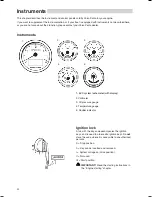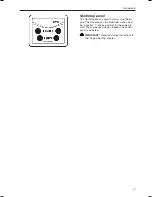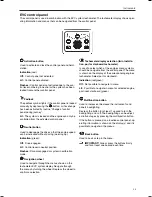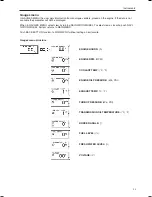
Engine monitoring system
The engines are equipped with common rail system
and electronically controlled injectors.
The injectors contain an electro-magnetic valve which
sets the amount of fuel injected and the correct tim-
ing. The monitoring system measures the charge air
pressure and temperature, and calculates the avail-
able air mass. This determines the maximum amount
of fuel that can be injected (smoke limiter function).
The system also limits the maximum torque available
at the engine speed registered to protect the engine
and transmission from overload.
To protect the engine at too high coolant or charge air
temperatures and boost pressure as well as oil pres-
sure, the monitoring system reduces the amount of
fuel (reduced engine output) until the current values
are normalized.
The engine monitoring system also has a diagnostic
system, which helps users and service technicians to
determine the cause of malfunctions.
Users get information about faults by pop-ups that
are shown on the EVC system tachometer display.
Engine monitoring and the EVC
EC
system
Helm station
Control Unit
(SHCU)
Power train
Control Unit
(PCU)
Engine
Control Unit
(ECU)
Helm station
Control Unit
(HCU)
CAN bus
Servo Unit
Steering
(SUS)
Steering unit
15
Presentation
Summary of Contents for IPS 350
Page 1: ...OPERATOR SMANUAL VOLVO PENTA IPS 350 400 450 500 600 ...
Page 59: ...Turn Rotate Diagonally 57 Operation ...
Page 115: ...Notes 113 ...
Page 116: ...Notes 114 ...
Page 122: ......
Page 123: ......
Page 124: ...7747996 English 06 2007 ...
















































